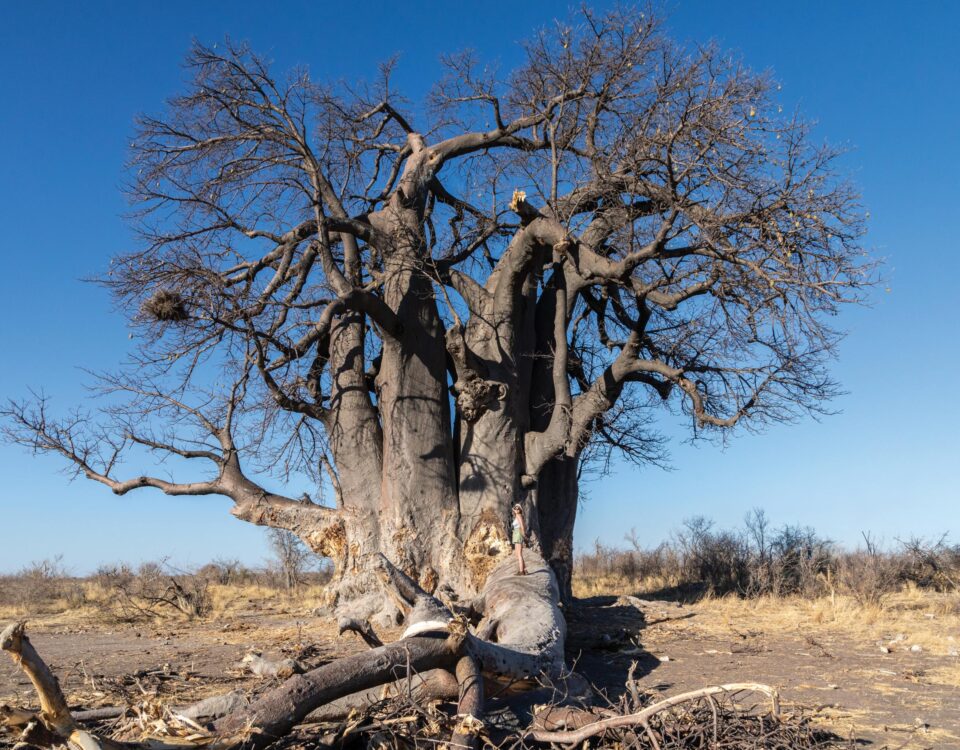
Conservancy profile – Sheya Shuushona
July 15, 2012Conservation profile Messages from the past
July 15, 2012by Ginger Mauney, Project Co-ordinator, Conservation and the Environment in Namibia
For nearly thirty years Bennie Roman has been active in the transformation of his land, and has shared in the great sense of pride these changes have brought to members of the resident communities.
From being part of the establishment of community game guards and assisting when the– Ministry of Environment and Tourism conducted its first survey to seek partnerships for conservation with local communities, to the establishment of conservancies and the transfer of rights of ownership of resources back to local communities, Bennie Roman has been involved. Now in his third term as Chairman of the Torra Conservancy, Roman is still listening, leading and laying a foundation for success in conservancies and Namibia’s Community Based Natural Resource Management movement.
“Success came to Torra because members are conservationists,” stresses Roman. “We started with a few game guards and have turned the entire community into voluntary game guards. Their eyes and ears are open to what is happening in the environment on a daily basis and consequently there is no poaching. Conservancy staff members conduct household interviews for vital feedback from our members. But the critical element is that we – the community – are the owners of our resources.”
This was not always the case. As Roman remembers, “In the beginning people were very sceptical because there was no incentive to protect our resources, but partnerships with non-governmental organisations that assisted in our development and with private companies that offered benefit-sharing, changed this.”
The Torra Conservancy, established in 1998, is not only one of Namibia’s first conservancies. It is also one of the country’s most successful conservancies. By 2001, Torra was the first communal conservancy to become financially sustainable, meeting all its own management costs and making a profit for its members.
With Namibia’s conservancy movement still gaining momentum, there are many lessons to be learnt from Torra and other successful conservancies.
“Expectations come from what people hear, and if the information isn’t accurate, conflicts may arise. Unrealistic expectations and conflict can be avoided by good communication and sound development strategies,” emphasises Roman.
For members of the Torra Conservancy, meetings are part of their policy and practice. General, quarterly and annual meetings where information is disseminated and feedback is encouraged are held in each of the five blocks of the conservancy. Groups are small and everyone is given a chance to speak, so everyone understands, preventing misinformation from taking root. Conservancies within the area also meet to share concerns, strategies and plans.
Torra was the first conservancy to develop land-use zonation maps. Working with experts to establish, then review and renew these maps, Torra has demarcated areas for farming, buffer areas for wildlife, mixed areas for emergency grazing and photographic tourism, and for hunting. “Hunting is an important part of management, especially in arid regions of Namibia. Sustainable hunting is part of drought management and has its place in conservation and conservancies,” adds Roman.
“Occasionally, the need arises for one group to move into another area. For example, if Wilderness Safaris guests are tracking rhino and the rhino have moved into the grazing area, that group will be contacted and, only with the group’s approval, will the tracking continue. Again, it comes down to communication, and it works.”
The largest section of land in the Torra Conservancy has been reserved for photographic tourism. Within this rugged landscape, the conservancy and Wilderness Safaris established the award-winning Damaraland Camp, the first joint-venture partnership in Namibia between a community and the private sector.
Today, with training and employment opportunities generated at Damaraland Camp, 23 conservancy members work at the camp and another 31 are employed by Wilderness Safaris in other parts of its operation. Under a land-lease agreement, Wilderness Safaris pays rent to the conservancy, but more than this, the Torra Conservancy is a joint equity partner in the camp. Roman shakes his head: “Suddenly our conservancy members are affected by changes in the global economy!”
This statement expresses just how far the Torra Conservancy has come. From subsistence farming on land that appeared to have little value to owners of resources and an internationally acclaimed lodge, members of this maturing conservancy have established a sustainable, resource-based business that links them to the world economy.
The lessons from Benny Roman and the Torra Conservancy are clear. Be patient, be diligent, dream big, and never, ever stop communicating.
This article appeared in the 2010/11 edition of Conservation and the Environment in Namibia.

